Volume 9-14 (2020-26)
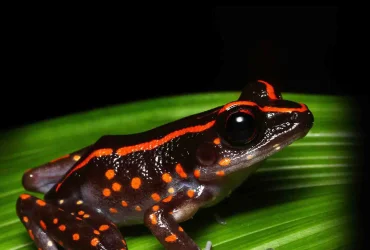 v14i2.380
v14i2.380eISSN: 1800-427X (online)
DOI:10.47605/tapro.v14i2.380
Submitted date: 2 February 2025
Accepted date: 22 October 2025
Published date: 28 November 2025
Pp. 283–292.
A COMPREHENSIVE BIBLIOMETRIC ANALYSIS OF OTOLITH RESEARCH ON EELS
Metachul Kusna*, T. Triyanto, Eri Sahabudin, Foni A. Setiawan, Gadis S Haryani, L. Lukman, Hendro Wibowo, Fauzan Ali, Fachmijany Sulawesty, Endra Triwisesa, Angga Dwinovantyo, Octavianto Samir, Eva Nafisyah, N. Nurjirana & S. Sutrisno
*Corresponding author. E-mail: meta002@brin.go.id
Abstract
Otoliths serve as biogenic archives that reveal age, growth, habitat shifts, and environmental histories of fishes. We analyzed 94 years of eel otolith research (374 Scopus-indexed papers, 1930–2023) and visualized co-authorship and keyword networks with VOSviewer. Output rose sharply after 2000, dominated by Japan (26%), Taiwan (12%), and France (11%), forming dense clusters of collaboration among Japan, Taiwan, France, and North America. Research themes progressed from early age and growth studies to otolith microchemistry, migration and recruitment dynamics, and, more recently, to conservation, contaminants, and climate change. Core keywords (“otolith,” “age,” “growth,” “migration”) persist, with newer emphases on phenotypic plasticity and restoration. Tropical anguillids remain underrepresented relative to temperate species, non-anguillid eels appear sporadically, and several life stages—especially leptocephali and yellow eels—are unevenly studied. This synthesis benchmarks global eel otolith scholarship and identifies priorities for cross-regional collaboration and conservation-linked research.
Section Editor: Michael J. Miller
DOI:10.47605/tapro.v14i2.380
Submitted date: 2 February 2025
Accepted date: 22 October 2025
Published date: 28 November 2025
Pp. 283–292.
A COMPREHENSIVE BIBLIOMETRIC ANALYSIS OF OTOLITH RESEARCH ON EELS
Metachul Kusna*, T. Triyanto, Eri Sahabudin, Foni A. Setiawan, Gadis S Haryani, L. Lukman, Hendro Wibowo, Fauzan Ali, Fachmijany Sulawesty, Endra Triwisesa, Angga Dwinovantyo, Octavianto Samir, Eva Nafisyah, N. Nurjirana & S. Sutrisno
*Corresponding author. E-mail: meta002@brin.go.id
Abstract
Otoliths serve as biogenic archives that reveal age, growth, habitat shifts, and environmental histories of fishes. We analyzed 94 years of eel otolith research (374 Scopus-indexed papers, 1930–2023) and visualized co-authorship and keyword networks with VOSviewer. Output rose sharply after 2000, dominated by Japan (26%), Taiwan (12%), and France (11%), forming dense clusters of collaboration among Japan, Taiwan, France, and North America. Research themes progressed from early age and growth studies to otolith microchemistry, migration and recruitment dynamics, and, more recently, to conservation, contaminants, and climate change. Core keywords (“otolith,” “age,” “growth,” “migration”) persist, with newer emphases on phenotypic plasticity and restoration. Tropical anguillids remain underrepresented relative to temperate species, non-anguillid eels appear sporadically, and several life stages—especially leptocephali and yellow eels—are unevenly studied. This synthesis benchmarks global eel otolith scholarship and identifies priorities for cross-regional collaboration and conservation-linked research.
Section Editor: Michael J. Miller
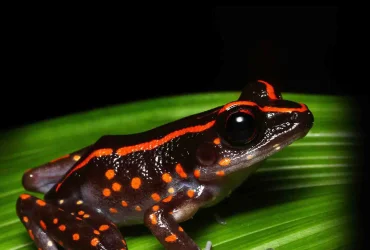 v14i2.379
v14i2.379eISSN: 1800-427X (online)
DOI:10.47605/tapro.v14i2.379
Submitted date: 25 February 2025
Accepted date: 22 October 2025
Published date: 28 November 2025
Pp. 275–282.
MAPPING THE SCIENTIFIC LANDSCAPE OF ENVIRONMENTAL POLLUTION RESEARCH: A BIBLIOMETRIC APPROACH
Randi Mulianda*, W. Wulandari, Novia Qomariyah, Andi Ella, Yenni Yusriani, Ahmad Sofyan & I Nyoman G. Darma
*Corresponding author. E-mail: randimulianda@gmail.com
Abstract
This bibliometric analysis maps global research on the impacts of environmental pollution on biodiversity from 1990–2024. Using Scopus data processed with VOSviewer, Bibliometrix, and OpenRefine, the study identifies major publication trends and thematic structures. Research output surged after 2015, mirroring rising concern about ecosystem degradation. The United States and China dominate publication volume and collaboration networks. Core themes include heavy metals, microplastics, and persistent organic pollutants, with increasing focus on bioaccumulation, biomagnification, and ecosystem health risks. Thematic evolution shows a transition toward interdisciplinary and risk-oriented studies. Findings highlight geographic and funding disparities, underscoring the need for broader international participation. Despite database and keyword limitations, this study offers insights into how scientific communities respond to pollution-driven biodiversity loss and provides an evidence base for policy, education, and coordinated global research.
Section Editor: Rima Isaifan
DOI:10.47605/tapro.v14i2.379
Submitted date: 25 February 2025
Accepted date: 22 October 2025
Published date: 28 November 2025
Pp. 275–282.
MAPPING THE SCIENTIFIC LANDSCAPE OF ENVIRONMENTAL POLLUTION RESEARCH: A BIBLIOMETRIC APPROACH
Randi Mulianda*, W. Wulandari, Novia Qomariyah, Andi Ella, Yenni Yusriani, Ahmad Sofyan & I Nyoman G. Darma
*Corresponding author. E-mail: randimulianda@gmail.com
Abstract
This bibliometric analysis maps global research on the impacts of environmental pollution on biodiversity from 1990–2024. Using Scopus data processed with VOSviewer, Bibliometrix, and OpenRefine, the study identifies major publication trends and thematic structures. Research output surged after 2015, mirroring rising concern about ecosystem degradation. The United States and China dominate publication volume and collaboration networks. Core themes include heavy metals, microplastics, and persistent organic pollutants, with increasing focus on bioaccumulation, biomagnification, and ecosystem health risks. Thematic evolution shows a transition toward interdisciplinary and risk-oriented studies. Findings highlight geographic and funding disparities, underscoring the need for broader international participation. Despite database and keyword limitations, this study offers insights into how scientific communities respond to pollution-driven biodiversity loss and provides an evidence base for policy, education, and coordinated global research.
Section Editor: Rima Isaifan
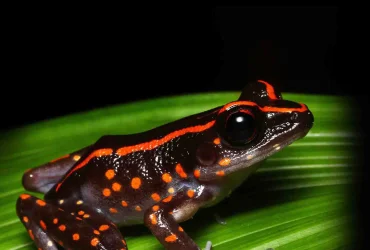 v14i2.378
v14i2.378eISSN: 1800-427X (online)
DOI:10.47605/tapro.v14i2.378
Submitted date: 6 February 2025
Accepted date: 22 October 2025
Published date: 25 November 2025
Pp. 260–274.
THE “KALPATARU” PHILOSOPHY AS AN INDONESIAN PARADIGM OF BIODIVERSITY: INSIGHTS FROM THE KARMAWIBHAṄGA RELIEFS OF BOROBUDUR
Ibnu Maryanto, Rusdianto Rusdianto, Hidayat Ashari, Aris A. Mundayat, Fauziah Fauziah, Wawan Sujarwo, Dony S. Wibowo & Eko Sulistyadi
*Corresponding author. E-mail: ibnumaryanto@gmail.com
Abstract
Borobudur Temple in Indonesia, a UNESCO World Heritage site, is renowned for its intricate architecture and carved reliefs. Among its Buddhist symbols, the Kalpataru and the Kinara-Kinari reliefs represent biodiversity, environmental enlightenment, and a cosmological paradigm revealed through interconnectivity analysis. This study applies a holistic approach integrating intra-, inter-, and extra-textual as well as contextual analysis, complemented by a post-human perspective that deconstructs human centrality and places all beings on equal footing. The goal is to uncover alternative meanings of inclusivity and equality through Kalpataru cosmology. The article explores the relationship between multispecies flora and fauna within the Kalpataru and Kinara-Kinari motifs of the Karmawibhangga reliefs at Borobudur and their symbolic role in Buddhist cosmology. Through this holistic examination, the study highlights the enduring values of these reliefs as prototypes for understanding the interconnectedness of life.
Section Editor: Clare Palmer
DOI:10.47605/tapro.v14i2.378
Submitted date: 6 February 2025
Accepted date: 22 October 2025
Published date: 25 November 2025
Pp. 260–274.
THE “KALPATARU” PHILOSOPHY AS AN INDONESIAN PARADIGM OF BIODIVERSITY: INSIGHTS FROM THE KARMAWIBHAṄGA RELIEFS OF BOROBUDUR
Ibnu Maryanto, Rusdianto Rusdianto, Hidayat Ashari, Aris A. Mundayat, Fauziah Fauziah, Wawan Sujarwo, Dony S. Wibowo & Eko Sulistyadi
*Corresponding author. E-mail: ibnumaryanto@gmail.com
Abstract
Borobudur Temple in Indonesia, a UNESCO World Heritage site, is renowned for its intricate architecture and carved reliefs. Among its Buddhist symbols, the Kalpataru and the Kinara-Kinari reliefs represent biodiversity, environmental enlightenment, and a cosmological paradigm revealed through interconnectivity analysis. This study applies a holistic approach integrating intra-, inter-, and extra-textual as well as contextual analysis, complemented by a post-human perspective that deconstructs human centrality and places all beings on equal footing. The goal is to uncover alternative meanings of inclusivity and equality through Kalpataru cosmology. The article explores the relationship between multispecies flora and fauna within the Kalpataru and Kinara-Kinari motifs of the Karmawibhangga reliefs at Borobudur and their symbolic role in Buddhist cosmology. Through this holistic examination, the study highlights the enduring values of these reliefs as prototypes for understanding the interconnectedness of life.
Section Editor: Clare Palmer
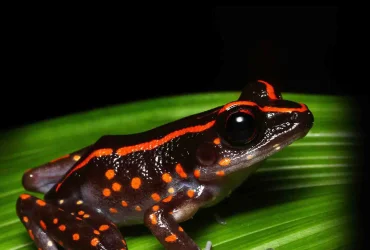 v14i2.377
v14i2.377eISSN: 1800-427X (online)
DOI:10.47605/tapro.v14i2.377
Submitted date: 19 July 2025
Accepted date: 21 October 2025
Published date: 25 November 2025
Pp. 245–259, Pl. 25–27.
TWO NEW SPECIES OF THE Hylarana signata COMPLEX (ANURA: RANIDAE) FROM SUMATRA AND THE DISTRIBUTION OF H. sundabarat (CHAN, ABRAHAM, GRISMER & BROWN, 2020)
Amat Ribut*, Misbahul Munir, A.A. Thasun Amarasinghe, Danny Gunalen, Eric N. Smith, Achmad Farajallah* & Amir Hamidy
*Corresponding author. E-mail: ributamat@gmail.com
Abstract
The Hylarana signata complex is species-rich in Indonesia but remains taxonomically unresolved, particularly across Sumatra, where morphological conservatism obscures lineage boundaries. We analyzed Sumatran populations using an integrative dataset comprising adult-male morphology (32 characters) and mitochondrial DNA (16S rRNA, 444 bp). Phylogenetic analyses using Bayesian inference, maximum-likelihood, and neighbour-joining methods revealed two distinct and well-supported lineages, here described as new species. The uncorrected p-distance between them (4.81%) exceeds typical species-level thresholds in anurans. Multivariate analyses (PCA) show partial morphometric overlap with congeners, but the new species are diagnosable by consistent combinations of external traits—including humeral gland size and placement, dorsolateral stripe pattern, and webbing formula—corroborated by mitochondrial divergence. We also confirm H. sundabarat in multiple Sumatran provinces, refining its known range in Sundaland. All localities were georeferenced and verified with voucher specimens or genetic data following GBIF citation standards. These findings clarify the composition of the H. signata complex in Sumatra and highlight the island’s cryptic amphibian endemism and the importance of protected montane forests for biodiversity conservation.
Section Editor: Koshiro Eto
DOI:10.47605/tapro.v14i2.377
Submitted date: 19 July 2025
Accepted date: 21 October 2025
Published date: 25 November 2025
Pp. 245–259, Pl. 25–27.
TWO NEW SPECIES OF THE Hylarana signata COMPLEX (ANURA: RANIDAE) FROM SUMATRA AND THE DISTRIBUTION OF H. sundabarat (CHAN, ABRAHAM, GRISMER & BROWN, 2020)
Amat Ribut*, Misbahul Munir, A.A. Thasun Amarasinghe, Danny Gunalen, Eric N. Smith, Achmad Farajallah* & Amir Hamidy
*Corresponding author. E-mail: ributamat@gmail.com
Abstract
The Hylarana signata complex is species-rich in Indonesia but remains taxonomically unresolved, particularly across Sumatra, where morphological conservatism obscures lineage boundaries. We analyzed Sumatran populations using an integrative dataset comprising adult-male morphology (32 characters) and mitochondrial DNA (16S rRNA, 444 bp). Phylogenetic analyses using Bayesian inference, maximum-likelihood, and neighbour-joining methods revealed two distinct and well-supported lineages, here described as new species. The uncorrected p-distance between them (4.81%) exceeds typical species-level thresholds in anurans. Multivariate analyses (PCA) show partial morphometric overlap with congeners, but the new species are diagnosable by consistent combinations of external traits—including humeral gland size and placement, dorsolateral stripe pattern, and webbing formula—corroborated by mitochondrial divergence. We also confirm H. sundabarat in multiple Sumatran provinces, refining its known range in Sundaland. All localities were georeferenced and verified with voucher specimens or genetic data following GBIF citation standards. These findings clarify the composition of the H. signata complex in Sumatra and highlight the island’s cryptic amphibian endemism and the importance of protected montane forests for biodiversity conservation.
Section Editor: Koshiro Eto
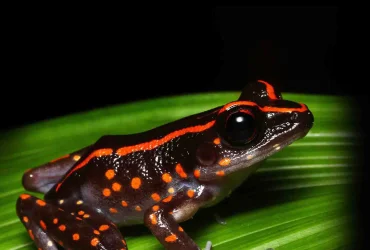 v14i2.376
v14i2.376eISSN: 1800-427X (online)
DOI:10.47605/tapro.v14i2.376
Submitted date: 30 January 2025
Accepted date: 22 October 2025
Published date: 18 November 2025
Pp. 236–244.
BUTTERFLY INDICATORS AND ASSEMBLAGE PATTERNS IN URBANIZED GREATER JAKARTA
Nurul L. Winarni*, N. Nuruliawati, Achmad R. Junaid & Bhisma G. Anugra
*Corresponding author. E-mail: n.winarni@sci.ui.ac.id
Abstract
Urban areas dominated by man-made structures can still provide habitats for butterflies. To assess urban butterfly diversity, KupuKita—a citizen science platform—was launched in 2021 to monitor butterflies across the Greater Jakarta region (Jakarta, Bogor, Depok, Tangerang, and Bekasi). Using a simple geotagged form with visual species lists from Papilionidae, Pieridae, and Nymphalidae families, data were collected from four habitat types: home gardens, green spaces, parks, and roadsides. Between March 2021 and November 2022, 50 species were recorded, with Appias olferna, Leptosia nina, Eurema sp., and Hypolimnas bolina being the most common. Cluster analysis based on habitat composition and vegetation identified three ecological groups—urban generalists, urban-tolerant, and rare species. Indicator species were recognized for green spaces and roads, but none for home gardens due to vegetation variability. These findings demonstrate the potential of citizen science for evaluating urbanization effects on butterfly communities.
Section Editor: Tim New
DOI:10.47605/tapro.v14i2.376
Submitted date: 30 January 2025
Accepted date: 22 October 2025
Published date: 18 November 2025
Pp. 236–244.
BUTTERFLY INDICATORS AND ASSEMBLAGE PATTERNS IN URBANIZED GREATER JAKARTA
Nurul L. Winarni*, N. Nuruliawati, Achmad R. Junaid & Bhisma G. Anugra
*Corresponding author. E-mail: n.winarni@sci.ui.ac.id
Abstract
Urban areas dominated by man-made structures can still provide habitats for butterflies. To assess urban butterfly diversity, KupuKita—a citizen science platform—was launched in 2021 to monitor butterflies across the Greater Jakarta region (Jakarta, Bogor, Depok, Tangerang, and Bekasi). Using a simple geotagged form with visual species lists from Papilionidae, Pieridae, and Nymphalidae families, data were collected from four habitat types: home gardens, green spaces, parks, and roadsides. Between March 2021 and November 2022, 50 species were recorded, with Appias olferna, Leptosia nina, Eurema sp., and Hypolimnas bolina being the most common. Cluster analysis based on habitat composition and vegetation identified three ecological groups—urban generalists, urban-tolerant, and rare species. Indicator species were recognized for green spaces and roads, but none for home gardens due to vegetation variability. These findings demonstrate the potential of citizen science for evaluating urbanization effects on butterfly communities.
Section Editor: Tim New
Hubungi Kami
The ultimate aim of the journal is to provide an effective medium for communication of the latest and best scientific information.
Copyright © 2020 Taprobanica. All Rights Reserved
Jasa Pembuatan Website by IKT




